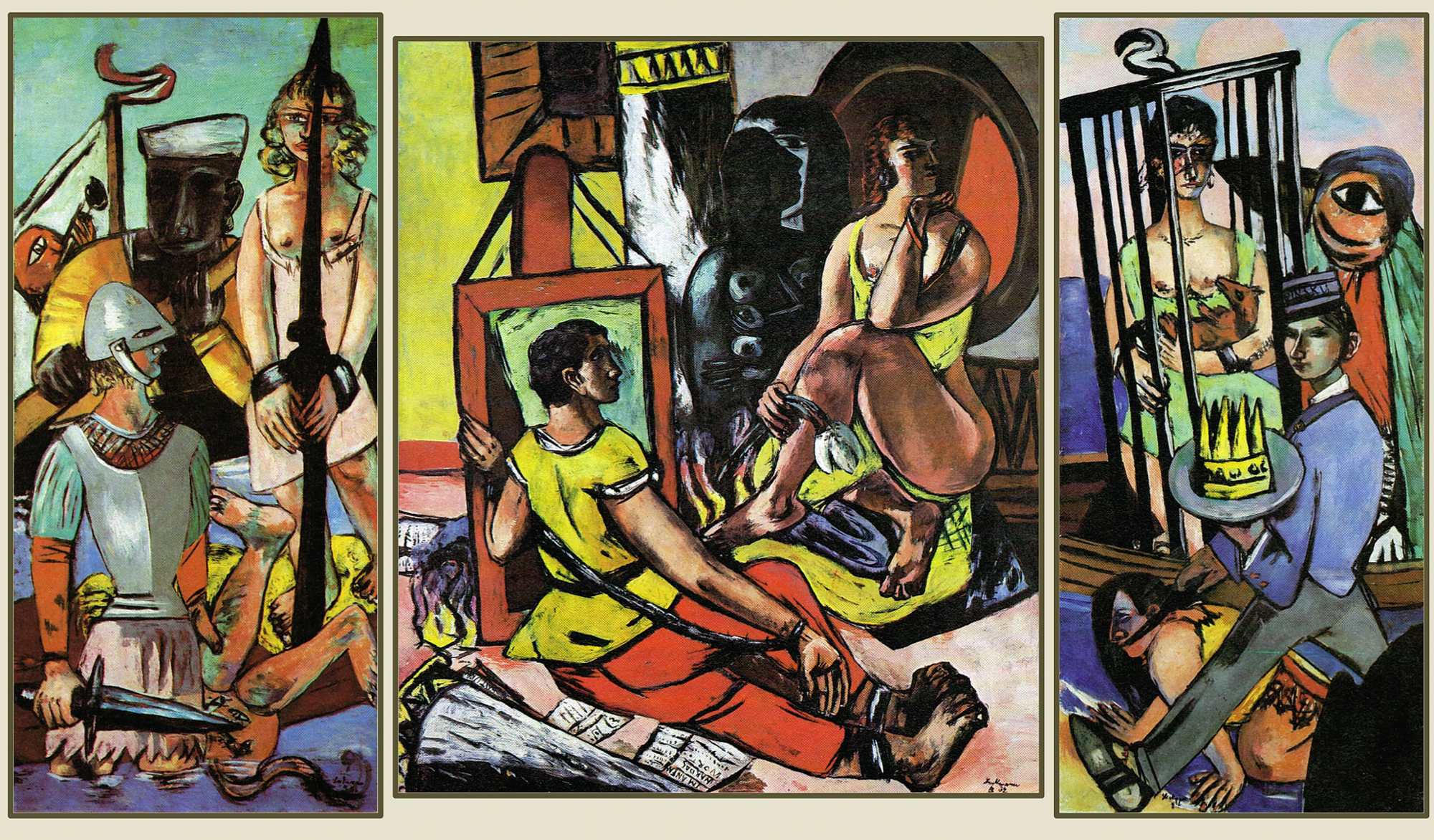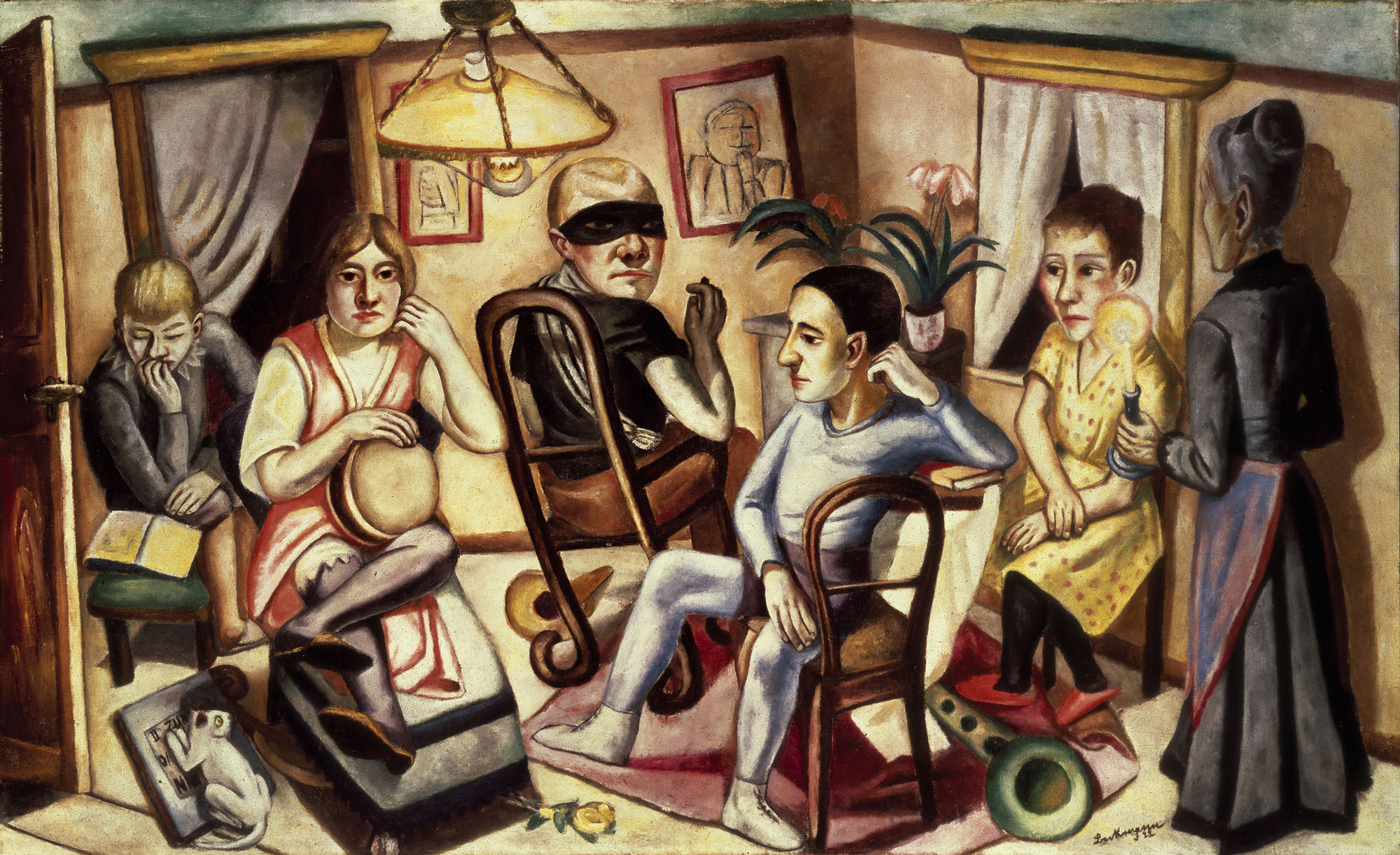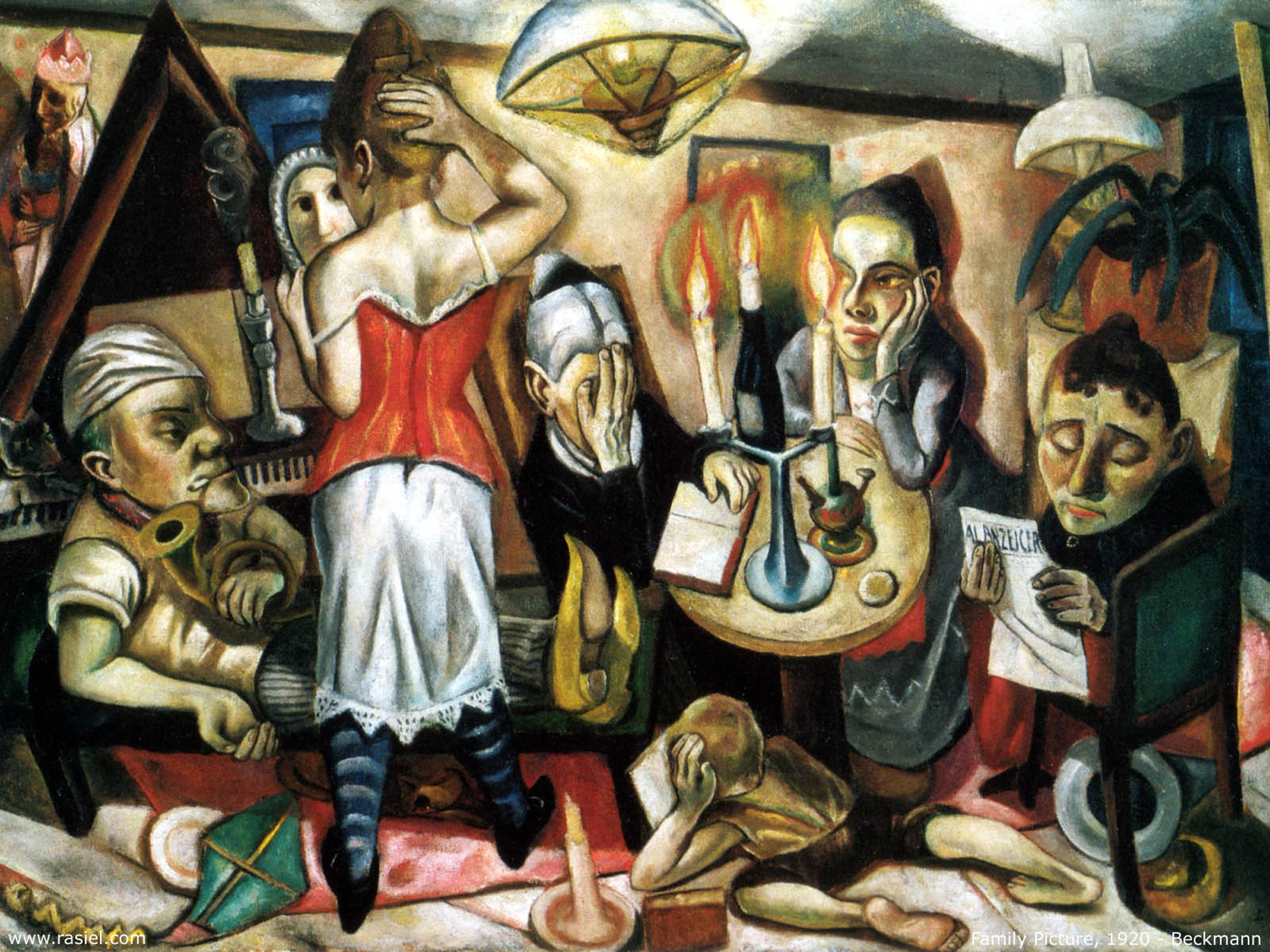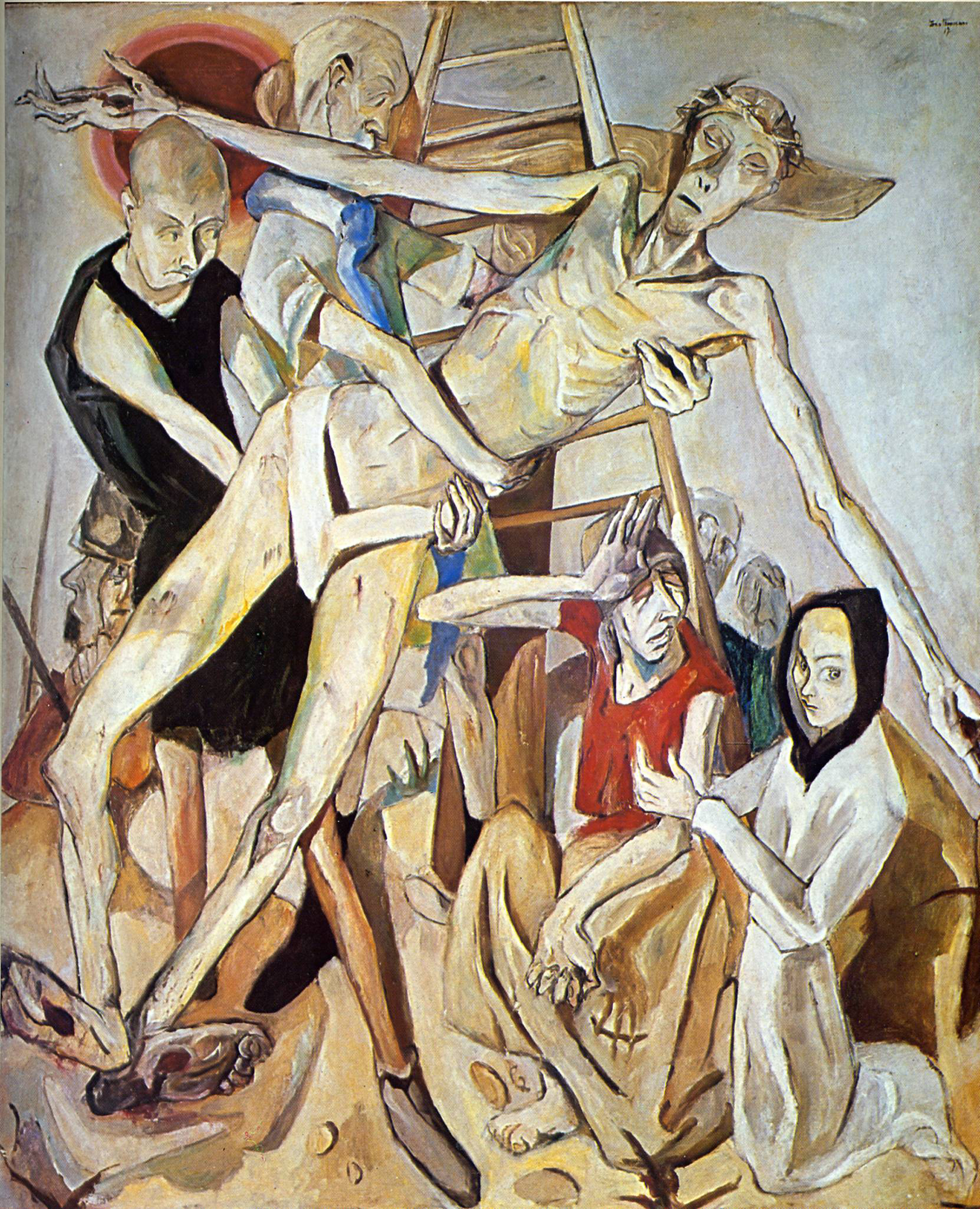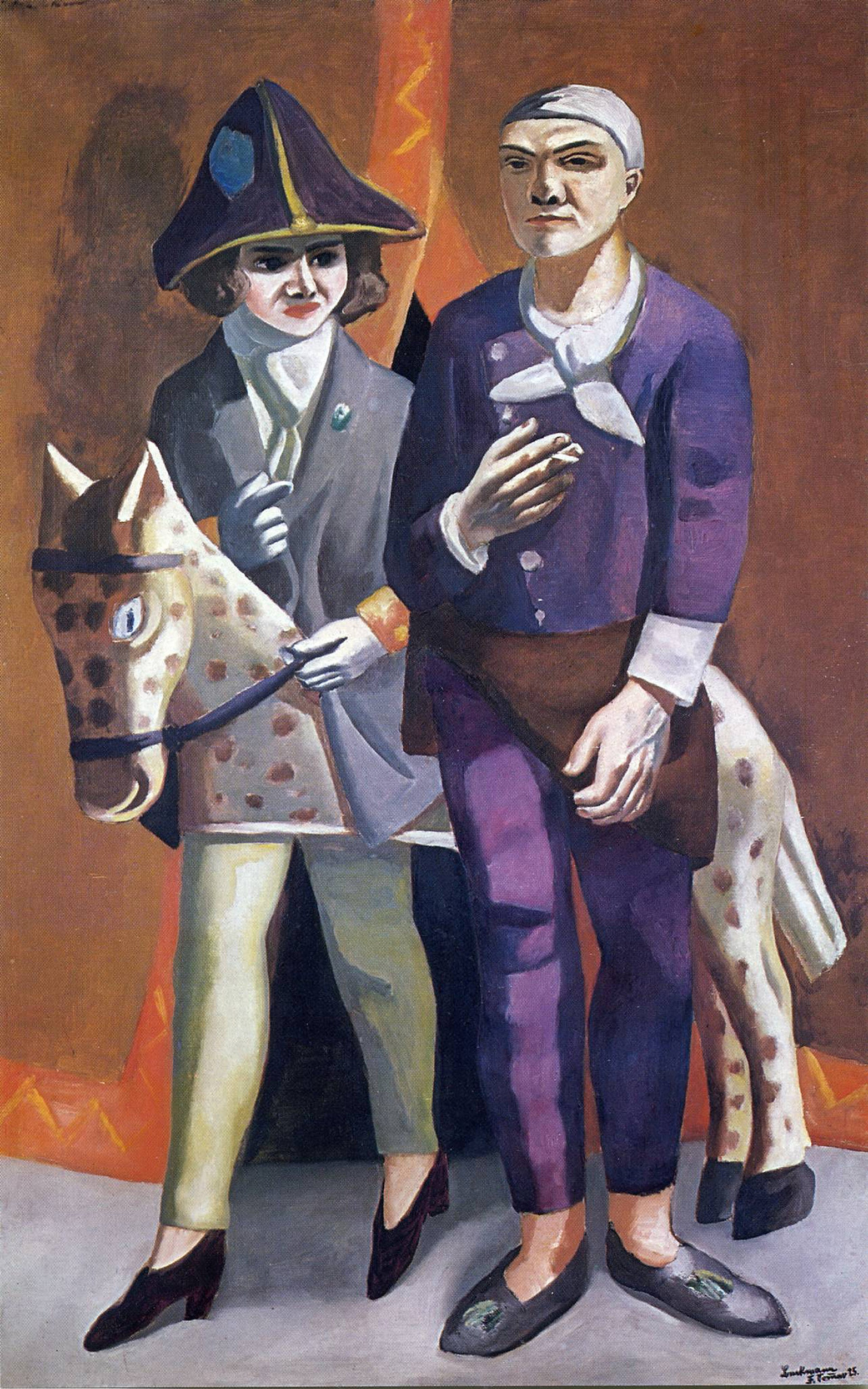Painter, printmaker. Known for probing the human condition in portraits, self-portraits, and enigmatic, allegorical tableaus. Emerged in Berlin in the early 1910s working in the late Impressionist manner. Joined medical corps during World War I. Served in Belgium, where he met Erich Heckel. Discharged after a nervous breakdown in 1915. Although he had publicly criticized Franz Marc and the Blaue Reiter’s impulse toward abstraction and spirituality in 1912, harrowing experience of war led him to incorporate strategies of distortion, angularity, and exaggerated color. After World War I, settled in Frankfurt but maintained ties to Berlin art circles. Focused on urban themes especially the disaffection of postwar society, and often depicted life as a theater or circus in tightly compressed compositions, which he sometimes elaborated in a portfolio format. In the mid-1920s compositions became less crowded and more naturalistic.
Made a total of 373 prints, all black and white, with printmaking a major focus between 1914 and 1923. Preferred the scratchy texture of etching and drypoint, but also worked in lithography; made only nineteen woodcuts. Most were issued by leading dealer-publishers, including Paul Cassirer and J. B. Neumann, in Berlin, and Reinhard Piper, in Munich.
More than five hundred works removed from public collections by Nazis in 1937. Waited out World War II in Amsterdam, then assumed teaching positions in St. Louis and New York.


